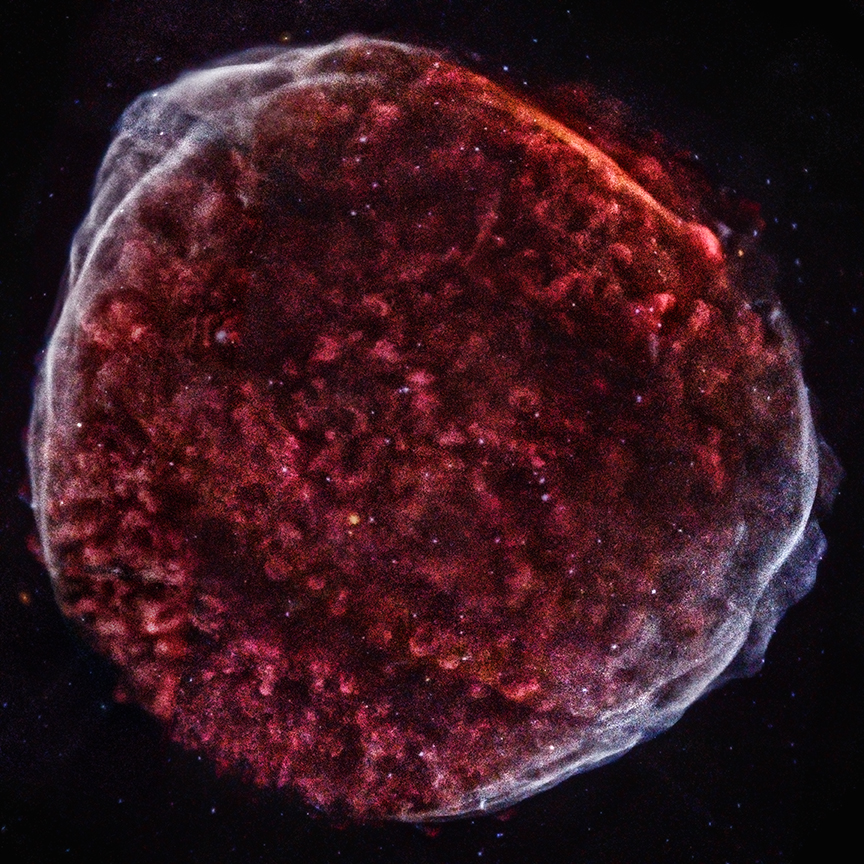K A B O O M !!!

Bloody hell !!! Clearly not a system you'd have wanted to be in without "hyperdrive" unit! So, the next question is, at 7,000 light years from Earth can we go there and dodge stella bits?
So, the next question is, at 7,000 light years from Earth can we go there and dodge stella bits? 
The Chandra image provides new insight into the nature of SN1006, which is the remnant of a so-called Type Ia supernova . This class of supernova is caused when a white dwarf pulls too much mass from a companion star and explodes, or when two white dwarfs merge and explode. Understanding Type Ia supernovas is especially important because astronomers use observations of these explosions in distant galaxies as mileposts to mark the expansion of the Universe.
The new SN 1006 image represents the most spatially detailed map yet of the material ejected during a Type Ia supernova. By examining the different elements in the debris field -- such as silicon, oxygen, and magnesium -- the researchers may be able to piece together how the star looked before it exploded and the order that the layers of the star were ejected, and constrain theoretical models for the explosion.
Scientists are also able to study just how fast specific knots of material are moving away from the original explosion. The fastest knots are moving outward at almost eleven million miles per hour, while those in other areas are moving at a more leisurely seven million miles per hour. SN 1006 is located about 7,000 light years from Earth. The new Chandra image of SN 1006 contains over 8 days worth of observing time by the telescope. These results were presented at a meeting of High Energy Astrophysics Division of the American Astronomical Society in Monterey, CA.

Bloody hell !!! Clearly not a system you'd have wanted to be in without "hyperdrive" unit!
The Chandra image provides new insight into the nature of SN1006, which is the remnant of a so-called Type Ia supernova . This class of supernova is caused when a white dwarf pulls too much mass from a companion star and explodes, or when two white dwarfs merge and explode. Understanding Type Ia supernovas is especially important because astronomers use observations of these explosions in distant galaxies as mileposts to mark the expansion of the Universe.
The new SN 1006 image represents the most spatially detailed map yet of the material ejected during a Type Ia supernova. By examining the different elements in the debris field -- such as silicon, oxygen, and magnesium -- the researchers may be able to piece together how the star looked before it exploded and the order that the layers of the star were ejected, and constrain theoretical models for the explosion.
Scientists are also able to study just how fast specific knots of material are moving away from the original explosion. The fastest knots are moving outward at almost eleven million miles per hour, while those in other areas are moving at a more leisurely seven million miles per hour. SN 1006 is located about 7,000 light years from Earth. The new Chandra image of SN 1006 contains over 8 days worth of observing time by the telescope. These results were presented at a meeting of High Energy Astrophysics Division of the American Astronomical Society in Monterey, CA.

